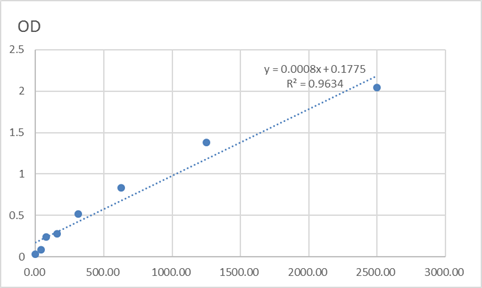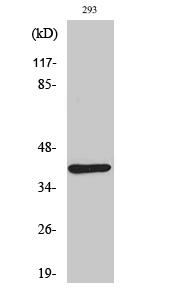Total Dok-4 Cell-Based Colorimetric ELISA Kit
- Catalog No.:KA3830C
- Applications:ELISA
- Reactivity:Human;Mouse
- Gene Name:
- DOK4
- Human Gene Id:
- 55715
- Human Swiss Prot No:
- Q8TEW6
- Mouse Swiss Prot No:
- Q99KE3
- Storage Stability:
- 2-8°C/6 months
- Other Name:
- Docking protein 4 (Downstream of tyrosine kinase 4) (Insulin receptor substrate 5) (IRS-5) (IRS5)
- Detection Method:
- Colorimetric
- Background:
- domain:PTB domain mediates receptor interaction.,function:DOK proteins are enzymatically inert adaptor or scaffolding proteins. They provide a docking platform for the assembly of multimolecular signaling complexes. DOK4 functions in RET-mediated neurite outgrowth and plays a positive role in activation of the MAP kinase pathway (By similarity). Putative link with downstream effectors of RET in neuronal differentiation. May be involved in the regulation of the immune response induced by T-cells.,PTM:Phosphorylated on tyrosine residues in response to insulin, IGF1 or RET stimulation.,similarity:Belongs to the DOK family. Type B subfamily.,similarity:Contains 1 IRS-type PTB domain.,similarity:Contains 1 PH domain.,subunit:Interacts with RET and TEK/TIE2. Interaction with RET is mediated through the PTB domain and requires phosphorylation of RET 'Tyr-1062'.,tissue specificity:Widely expressed. High expression in skeletal muscle, heart, kidney and liver. Weaker expression in spleen, lung and small intestine, brain, heart and. Expressed in both resting and activated peripheral blood T-cells.,
- Function:
- MAPKKK cascade, cell surface receptor linked signal transduction, enzyme linked receptor protein signaling pathway,transmembrane receptor protein tyrosine kinase signaling pathway, intracellular signaling cascade, protein kinase cascade,
- Expression:
- Widely expressed. High expression in skeletal muscle, heart, kidney and liver. Weaker expression in spleen, lung and small intestine, brain, heart and. Expressed in both resting and activated peripheral blood T-cells.
- June 19-2018
- WESTERN IMMUNOBLOTTING PROTOCOL
- June 19-2018
- IMMUNOHISTOCHEMISTRY-PARAFFIN PROTOCOL
- June 19-2018
- IMMUNOFLUORESCENCE PROTOCOL
- September 08-2020
- FLOW-CYTOMEYRT-PROTOCOL
- May 20-2022
- Cell-Based ELISA│解您多样本WB检测之困扰
- July 13-2018
- CELL-BASED-ELISA-PROTOCOL-FOR-ACETYL-PROTEIN
- July 13-2018
- CELL-BASED-ELISA-PROTOCOL-FOR-PHOSPHO-PROTEIN
- July 13-2018
- Antibody-FAQs



